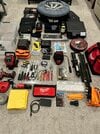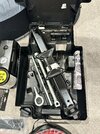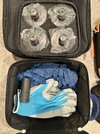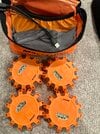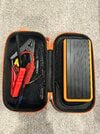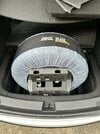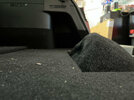Hi, planning a 1000 mile trip soon in my 2023 MYLR5. I’m sourcing a used wheel + a new tire that will serve as a full size spare. I’ve read about Modern Spare and T Sportline but those donut spares aren’t for me. Few questions:
Also, must I buy a torque wrench or will a regular lug wrench be ok?
I did a 200-250 mi trip within Georgia a few moths ago, however, this is much longer spanning 5 states and 15-16 hours one way. I want to be well prepared without going overboard.
Thanks.
- Looking to purchase from Craigslist or Marketplace. What should I be looking out for? Wouldn’t have a way to confirm if it will hold air or if it’s true until I mount a new tire. Any pointers to avoid issues?
- Will a 19” Gemini wheel from a 2021 fit my 2023?
- I think it is ok, and expected, to get one with curb rashes. Prices range from $90 to $250 based on condition. Any issues with getting one on the low end of the price range with curb rashes?
- The goal is to get an identical tire to the one I have on the car. If I can’t purchase an exact match, and buy a different brand tire, what issues can be expected?
- Spare tire will be brand new while the tires on the car have 3K miles. What do I need to be prepared for with regards to the car sensing a different tread level on one tire if I end up using the spare?
- I believe the tires are not directional. How can I confirm? If they are directional, how would one use a spare on either side of the car?
- Thoughts about getting a BLE TPMS sensor? Will the spare register with the car and cause issues while sitting in the trunk?
- Anything else?
Also, must I buy a torque wrench or will a regular lug wrench be ok?
I did a 200-250 mi trip within Georgia a few moths ago, however, this is much longer spanning 5 states and 15-16 hours one way. I want to be well prepared without going overboard.
Thanks.
Last edited:



